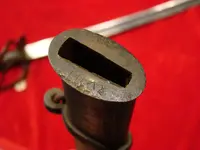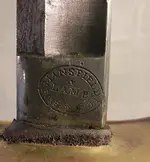View attachment 1431324
It was quite common for soldiers to match up their Scabbard from the company of "Kenansville" of NC to Swords made by...
Henry Mansfield and Estus Lamb of RI.
Swords were manufactured by Mansfield and Lamb starting in 1861.
Especially if they lost or misplaced their original equipment.
Your Scabbard shows the marking "V" which I would presume is part of the XVIII marking for Kenansville.
Could it have been possible?...That when Mansfield and Lamb were threatened with cancellation of their contract with the Government, due partly to inferior Scabbards... that maybe..Just Maybe...they purchased the balance of these fine Scabbards...from the NC company of Kenansville?
Confederate Cavalry Saber and Scabbard by Louis Froelich.
This fine saber is known as a Kenansville “Type I” produced by the Confederate States Armory in Kenansville, NC. Throat bears Roman # XVIII. This fine saber was proudly displayed in Steve Mullinax’s fine collection for many years and is a stellar example.
View attachment 1431325
Henry Mansfield and Estus Lamb owned a scythe factory in Forestdale, RI
THE COMPANY - This company was a very successful manufacturing firm in the decades preceding the Civil War, but during that time none of their production was devoted to sword making. Newton Darling began making scythes at Forestdale, Rhode Island (a small village in the rural town of North Smithfield) in about 1824. H.S. Mansfield joined the company shortly thereafter, and in 1839 Ansel Hollman joined the firm. In 1841, when Darling sold out, it became Mansfield and Holman, and later became Mansfield and Lamb when Mr. Estus Lamb became a partner.
The firm of Mansfield and Lamb owned the entire village of Forestdale (61 houses) including all public buildings. This system of literally creating a town from scratch in order to support a mill became known as the 'New England System of Manufacture,' and the very first example of this system was Slatersville, another village that is literally a stone's throw down the road from the Mansfield and Lamb works. As was mentioned above, they had the scythe manufactory and in 1860 they added a cotton mill.
It is stated in an old Rhode Island history, in the section on the Town of Smithfield, that the firm employed 250 workers, used 3 tons of steel, 100 grindstones and 1,400 bales of cotton. Prior to 1860, the scythe works manufactured 10,000 dozen scythes annually - a number that would decrease to 8,000 dozen annually by 1870. It would have been a logical move for the firm to manufacture swords if there was a profit to be made. In 1861, the company sought a United States Ordnance Department contract for arms and was awarded one on August 28, 1861, for 10,000 cavalry sabers. All 10,000 were required to be inspected and delivered by February of 1862. However, as of April 5, 1862, the firm had delivered only 6,500 light cavalry sabers. The pace of deliveries did not meet the conditions in the original contract, making it void. Therefore, Henry Mansfield traveled to Washington to appear before the U.S. Commission investigating ordnance contracts. This Commission created by Congress was a vehicle for weeding out poorly performing contractors and those contracts that were overcharging the government for goods.
In this case, Mansfield and Lamb was an American manufacturer that was making all of the saber parts on site and had finally worked out the usual problems inherent with manufacturing a new product. Hearing out Henry Mansfield, the Commission ruled in his favor and allowed the company to continue delivery of 2,000 completed sabers that had initially been rejected. These sabers were not up to U.S. standards because the scabbards were made of malleable iron suspension ring bands, and the regulation required hardened steel scabbards and mounts. Notwithstanding this defect, they were accepted at a reduced price. Many other contractors did not have the same luck with this Commission, having their contracts terminated and on-hand sabers not accepted. It is speculated that the Ordnance Department and the Commission favored domestic manufacturers over contractors that were primarily parts assemblers or importers.
During the remainder of the Civil War, the company was able to secure additional contracts with the Ordnance Department, eventually delivering 37,508 sabers." - Thillmann
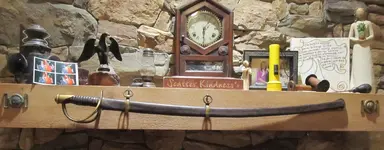 IMG_5518.webp558.4 KB · Views: 150
IMG_5518.webp558.4 KB · Views: 150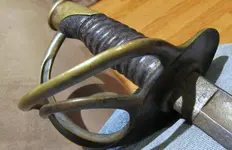 IMG_5519.webp483 KB · Views: 149
IMG_5519.webp483 KB · Views: 149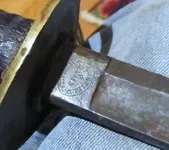 IMG_5520.webp156.3 KB · Views: 147
IMG_5520.webp156.3 KB · Views: 147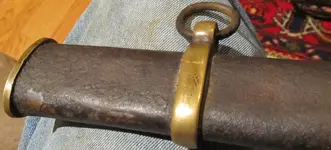 IMG_5521.webp512.4 KB · Views: 144
IMG_5521.webp512.4 KB · Views: 144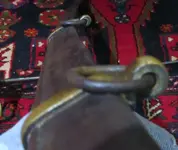 IMG_5522.webp131.4 KB · Views: 139
IMG_5522.webp131.4 KB · Views: 139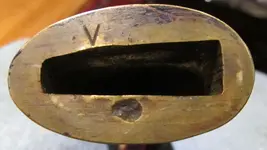 IMG_5523.webp231.1 KB · Views: 136
IMG_5523.webp231.1 KB · Views: 136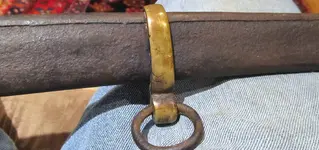 IMG_5524.webp856.6 KB · Views: 148
IMG_5524.webp856.6 KB · Views: 148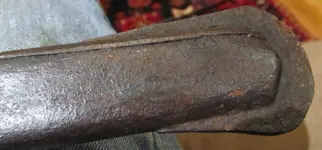 IMG_5525.webp578.7 KB · Views: 137
IMG_5525.webp578.7 KB · Views: 137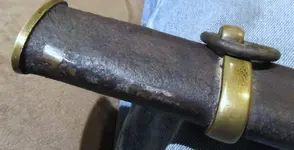 IMG_5526.webp412 KB · Views: 140
IMG_5526.webp412 KB · Views: 140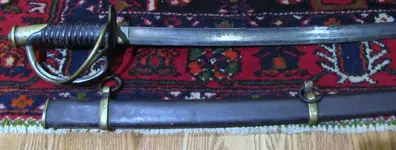 IMG_5527.webp443.8 KB · Views: 140
IMG_5527.webp443.8 KB · Views: 140


